Find out more about The Open University's History and Social Sciences courses.
Background
2020 and 2021 have been described as years like no other; “unprecedented times” was a phrase often used as a way of capturing the onset of the COVID-19 pandemic. But for railway workers working life carried on as normal in so far as they all booked on for duty, facing the public on a daily basis and carrying out their usual duties, alongside additional work requirements that came with the COVID-19 pandemic in a bid to control the spread of infection.
As growing numbers of cases began to be identified in Scotland in early 2020, and talk of lockdown started, union representatives began to be proactive in seeking meetings with managers to discuss measures to maintain the safety of both their colleagues and passengers alike. It was often railway workers who were responsible for getting other ‘key’ workers – such as carers, doctors and nurses – to their places of work. Most of the time, their managers were working at home, so they very much relied on their colleagues and union representatives for support and advice, making them more important than ever.
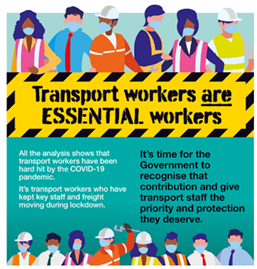 Balancing work and family life
Balancing work and family life
As schools started to close in 2020, the main impact was felt by women railway workers rather than their male colleagues, reflecting wider gender norms around the domestic division of labour. These working mothers were challenged by the need to juggle working their usual shifts, while managing new covid-related responsibilities, and also meeting the demand for increased home-based childcare and schooling. Working anti-social hours has always been part of the job on the railway and women have often had to balance the demands of shift working with being the main carer in the home.
However, the need to home school and provide childcare in what would normally constitute school hours meant that some women workers had to shoulder the added pressures of making new arrangements for when they were at work. As railway workers were classed as second tier key workers, some were able to get places for their children in nurseries, but many others had to call upon family members and friends as sources of additional help.
As the pandemic took hold and more restrictions were introduced, including new limits on numbers allowed to meet indoors and on household mixing, women workers without nursery provision found it increasingly different to draw on these sources of informal support and increasingly had to rely on swapping shifts to enable them to attend work and still meet their parenting responsibilities.
The particular experiences of women employees during the pandemic provides a powerful example of how the impact of COVID-19 was felt in different and unequal ways by different groups of workers, both on the railway but also across most areas of work and society.
Keeping a safe distance
As part of the health and safety measures rolled out across the Scottish railway system, the policy of on-train revenue protection was suspended to ensure conductors and ticket examiners did not have close contact with passengers that could put both at risk. Additional "barriers" and new practices were also brought in so that these same workers could maintain a 2-metre distance while on board. For example, on longer trains, coaches could be locked out of use for passengers to ensure staff members could travel safely while on duty. Given that most of the managers were working from home, the discussions the union reps had with them around facilitating these measures were all done via Zoom, but as frontline staff were working alongside the public every day to ensure key workers could still get to their own workplaces, the union reps were vital in ensuring their members’ safety in the absence of managerial personnel.
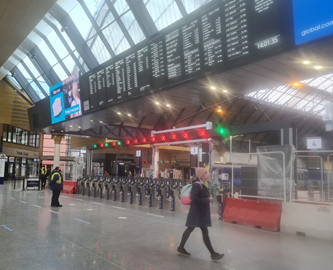 While across Scotland the trains were still running, there was a big impact on the train timetable and the number of passengers travelling on these trains fell significantly. One figure
was 300,000 passengers travelling in one week – equivalent to pre-COVID-19 numbers on some weekends alone, especially during events like the Edinburgh Festival during the month of August.
While across Scotland the trains were still running, there was a big impact on the train timetable and the number of passengers travelling on these trains fell significantly. One figure
was 300,000 passengers travelling in one week – equivalent to pre-COVID-19 numbers on some weekends alone, especially during events like the Edinburgh Festival during the month of August.
The train companies sought to ensure that while the country was in lockdown, essential workers could get to work, but that meant that some trains were very quiet, and sometimes the only passengers travelling were key workers, going back and forth to their workplaces. I once worked an 8-carriage train from Edinburgh Waverley to Glasgow Queen Street at 08:00 on a weekday morning with no more than 20 passengers on board. Pre-pandemic, that service would be described as "Full and Standing", meaning that every seat on the train would be occupied and there would be numerous passengers standing in each coach, unable to find a seat.
Significant reductions in passenger numbers and the suspension of revenue protection policies are likely to have significant implications for future policy and practice across Scotland’s railways as the train companies reflect on long-term profitability and staffing; the railway unions will be central in representing and fighting for the interests of frontline staff in the longer term, and meeting the specific employment needs of women relating to care provision and homelife.
Cleaning, redeployment and health and safety
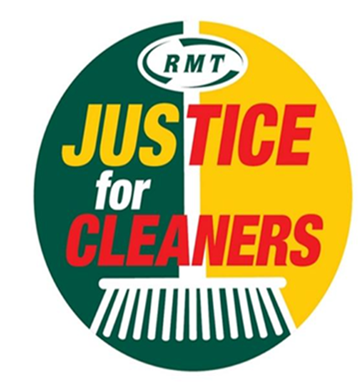 Cleaners in the railway – no longer a particularly
gendered occupation in this setting – have long been considered ‘absent heroes’. Even though there are rubbish and recycling bins in public areas and on trains, they are not often used. As in other sectors of the economy, the role the
cleaner has within the rail network is vital. Stations not being cleaned properly can cause a health and safety hazard. But this took on additional importance when the pandemic impacted.
Cleaners in the railway – no longer a particularly
gendered occupation in this setting – have long been considered ‘absent heroes’. Even though there are rubbish and recycling bins in public areas and on trains, they are not often used. As in other sectors of the economy, the role the
cleaner has within the rail network is vital. Stations not being cleaned properly can cause a health and safety hazard. But this took on additional importance when the pandemic impacted.
While the volume of passengers dropped, routine cleaning duties still had to be done, but now with a greater emphasis on ensuring that thorough and regular cleaning took place to help prevent the spread of the virus. More cleaners were deployed from the Hospitality grade – that is, on-train trolley stewards, selling refreshments. Indeed, as the catering trollies were withdrawn from trains, the hospitality stewards were enlisted to go to stations to clean all handrails and buttons using anti-bacterial sprays and wipes. This task was also to be completed on-train too. Again, such work came with additional health and safety implications for frontline staff – both regular and redeployed – creating more issues for the union reps to attend to in the interests of staff wellbeing.
Easing lockdown: Fears and concerns around re-establishing old routines
As lockdown eased and restrictions were slowly lifted in 2021 – albeit with some to-ing and fro-ing as COVID-19 figures rose and fell – there was anxiety among passenger-facing staff who would be working in changing conditions and be charged with re-establishing old policies and practices. Passenger numbers were expected to rise as people resumed working in offices and many stopped working primarily at home, and as leisure and hospitality businesses, including pubs, re-opened.
The previous reality of ticketless travel, followed by the re-instatement of revenue protection policies, meant staff were once again charged with carrying out ticket checks which brought with it new concerns for Conductors and Ticket Examiners who had to ask passengers who may have got used to travelling free, to pay once again. The reality of Revenue Protection being suspended early in the pandemic meant that most passengers stopped purchasing tickets unless they had to exit an automatic ticket barrier. Anti-social behaviour also became a bigger problem in the railway network, as some individuals saw the relaxing of checks and regulations, and the opportunity to ride trains without tickets, as an excuse to cause trouble, both on board and in stations.
In a bid to re-establish usual policies and practices, and standards of behaviour among passengers and station users, frontline staff will need to be supported by a strong BTP (British Transport Police) presence. As humans we have all adjusted to being distant from people, so working and travelling in close proximity with others in confined spaces will feel unfamiliar and potentially stressful for the foreseeable future. Railway staff will be present on the frontline as usual with some, particularly women workers, feeling uncomfortable and hesitant about approaching passengers again and reasserting rules and regulations, in the face of increased abuse from some members of the travelling public and the potential of increased risks to their health and safety.
Once again, the role of Union reps in keeping managers informed and pushing health and safety agendas will be crucial. Working in close partnership with the BTP can help to increase female worker confidence, especially when emotions are still running high given the experiences of the last 18 months, both among the travelling public and railway staff. With trains getting busier due to pubs re-opening and other mass events re-starting there will need to be a renewed effort to guard against increased confrontations on-train that may put staff at risk.
Railway Workers in the Post-Pandemic World
It is anticipated that it may take many years for the railway industry to recover from the effects of COVID-19. There may never be a return to the normal peak morning and afternoon travelling numbers. Many companies may choose to continue to have at least a proportion of their employees work from home, so the normal sight of commuters flooding the stations and trains could disappear. There may be a bigger shift to leisure travel, as people are encouraged to holiday at home to boost the local economy. Revenue loss has been significant and, given the way the franchises are run, this will mean that train operating companies (TOCs) will have to make cuts of one sort or another to recoup losses and save money. Ticketing models will need to be looked at. Who will be affected most by these cuts is open to debate. Will it be the passengers seeing cuts to services, particularly in rural areas, or increased costs of travel? Or will it be staff, as employers come for their terms and conditions and pension entitlements, or perhaps even their jobs?
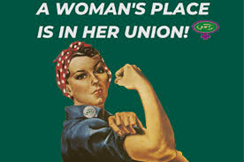 One key issue concerns the particular impact these responses might have on women who have enjoyed increased opportunities across the board in recent years in the railway industry. How will those women be impacted by any cuts to services, jobs and welfare
entitlements? The changes to come in the railway haven't yet been specified by employers, although there has already been a 2-year pay freeze imposed by the Department for Transport, which will affect the income of all railway workers, as inflation
continues to rise. In Scotland there has been a series of successive disputes, some of them leading to strike action, throughout 2021. But any changes
in railway workers’ terms and conditions could have a major impact on women in particular, for example with regard to the length of their working week, and employers could try to make changes to flexible working arrangements or part-time working,
all of which would have a significant effect on the ability of women to compete on equal terms with men within the industry and on their fragile work-home life balance.
One key issue concerns the particular impact these responses might have on women who have enjoyed increased opportunities across the board in recent years in the railway industry. How will those women be impacted by any cuts to services, jobs and welfare
entitlements? The changes to come in the railway haven't yet been specified by employers, although there has already been a 2-year pay freeze imposed by the Department for Transport, which will affect the income of all railway workers, as inflation
continues to rise. In Scotland there has been a series of successive disputes, some of them leading to strike action, throughout 2021. But any changes
in railway workers’ terms and conditions could have a major impact on women in particular, for example with regard to the length of their working week, and employers could try to make changes to flexible working arrangements or part-time working,
all of which would have a significant effect on the ability of women to compete on equal terms with men within the industry and on their fragile work-home life balance.
Women railway workers in Scotland have played a significant role in disputes across the railway industry in recent times. They have also been active along with other trade unionists in campaigning for a railway for Scotland that is driven by public and social need, and not by profit.
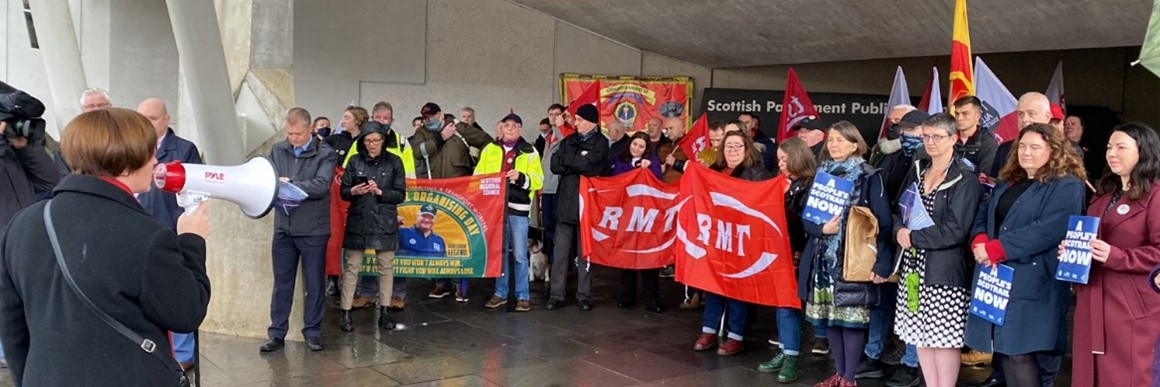
In November 2021, RMT members who worked on the Serco Caledonian Sleeper services took strike action over a pay dispute. As can be seen in the short video here, the presence of climate justice campaigners on the picket lines in Glasgow (who were in Glasgow for the COP26 event) made for a colourful and vocal protest.
Railway working and the COVID-19 Pandemic: Stories of the Impact on Personal lives
What follows are personal testimonies from two women railway workers in Scotland and their experiences of the pandemic. These are from interviews conducted by Mary Jane Herbison
- The railway family
Laura Kerr, a ScotRail conductor working at Glasgow Queen Street Station has a mutual swap with a colleague, which means she constantly works early shifts. This means she can start as early as 5am and finish as late as 6pm. This arrangement has worked for 5 years, as her mother would take her child to school and if Laura was finished on time, she would collect her daughter in the afternoons, or, failing that, her daughter would go to her gran’s house until she was finished.
This arrangement changed significantly in 2020. Laura’s mother has underlying health conditions, so she had to isolate at home and, therefore, Laura was no longer able to rely on her mother for help with childcare. As there were so many others in her workplace affected by similar pandemic-related issues, Laura made the decision to rely on the help of her friends and colleagues on a day-to-day basis, engaging in swaps which enable Laura to balance the demands of work and her daughter attending school.
These informal acts of cooperation are common in the railway, much to the benefit of those with additional responsibilities outside of working life, reflecting a sense of ‘family’ often commented on by colleagues who are happy to help out, where possible, and women workers in particular who feel well-supported by their railway co-workers.
- Managing the challenges – with the help of the Union
Corrine Jackson is a conductor, working at Edinburgh Waverley. As the first lockdown commenced, she had to shield at home, due to underlying health conditions. She felt torn about this, as she wanted to do her job alongside colleagues, but, more importantly, she had to keep herself and her family safe. She felt isolated and frustrated at home.
As a lone parent, Corrine had to consider her 2 children and the effects the lockdown was having on them both. Shielding was withdrawn between August and December, so Corrine happily returned to work, but of course, she was cautious, as the danger of COVID-19 was still present.
The day-to-day school life of children changed overnight. During the first lockdown, schools were closed early for Summer holidays. The weather in Scotland was good, it was dry and hot, but Corrine’s children missed their friends and peers, they were unable to say their goodbyes properly. Established end of year school trips were cancelled. This added to their anxiety.
Corrine’s children attend different schools. The gradual reopening of schools caused problems, as they were asked to attend at different times and sometimes, due to cases within the school, they were asked to isolate at home. The whole uncertainty was unsettling.
As COVID-19 cases increased again in the Winter of 2020, Corrine felt she had to take a step back from work once again. A second lockdown began and school children were sent home from school again; Corrine became an unqualified teacher as well as a mum. Corrine’s children are both dyslexic which brought new challenges and difficulties related to having to navigate online learning. Corrine felt immense stress and pressure, as her children were not getting taught by a teacher. Most parents felt this way, caught in a situation they could not control.
As lockdown is easing, Corrine is hoping to go back to work. The vaccine holds hope for a manageable future, learning to co-exist with COVID-19. This period has changed how Corrine describes herself. She always thought of herself as a strong, independent women. As a result of this global pandemic, she feels it has left her feeling vulnerable. Despite her feeling this way, she continued her role as a Union Learning Rep for the RMT. Courses were available online and she gained an Adult Achievement Award; this helped her feel involved and proud she had accomplished something.
Her experience demonstrates the specific impacts the pandemic has had on women as employees and mothers and the positive role opportunities provided by the Union can make to managing the challenges and rebuilding confidence.

This article is part of the Women and Scottish Railway History Project on OpenLearn.
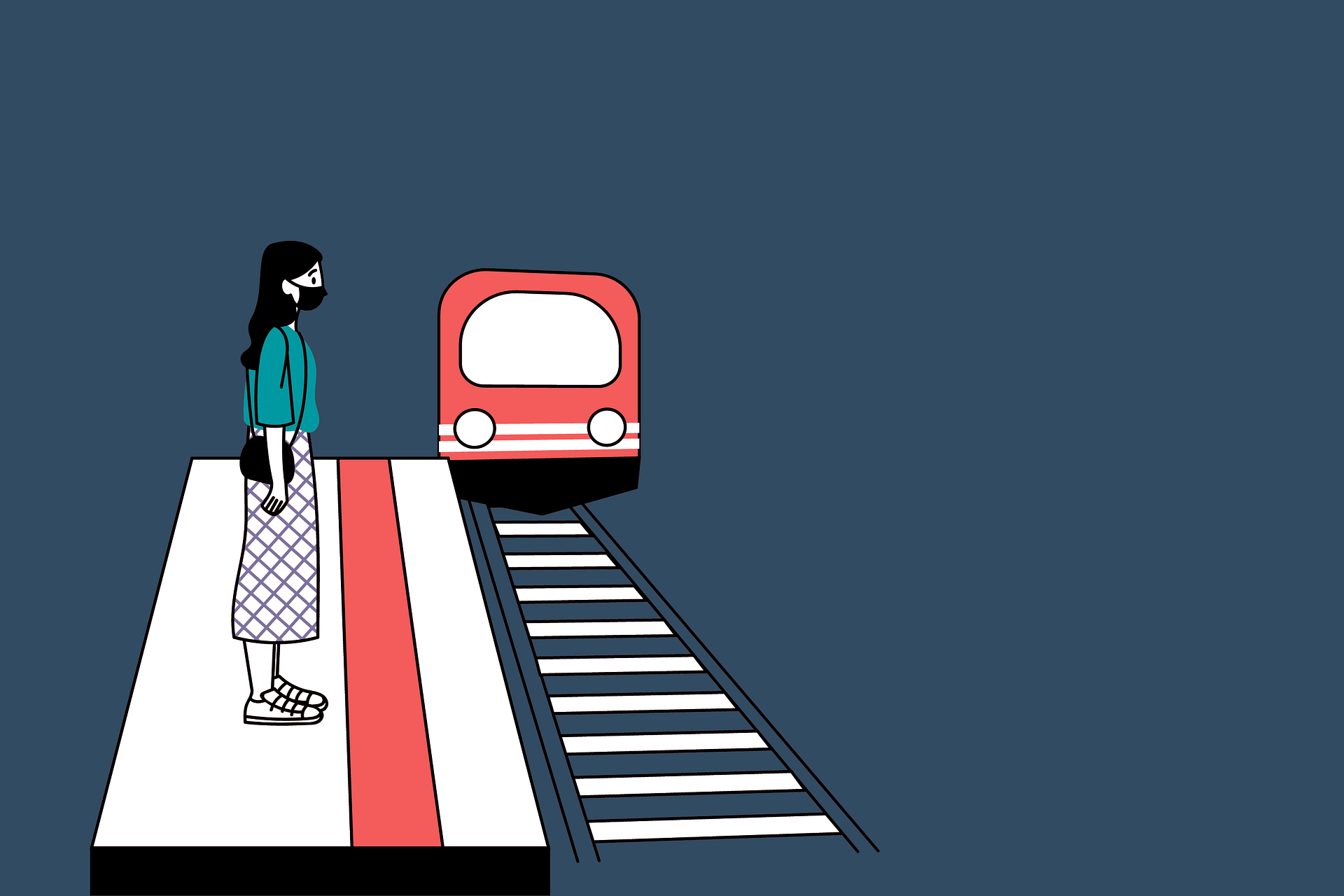

Rate and Review
Rate this article
Review this article
Log into OpenLearn to leave reviews and join in the conversation.
Article reviews